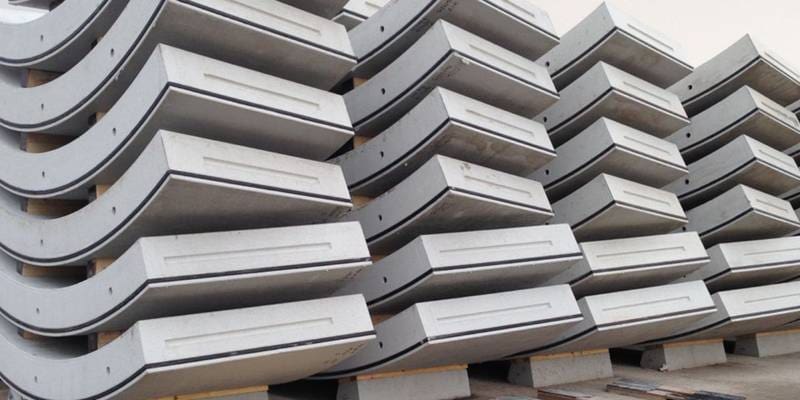The global Precast Concrete Market will grow at 5.4% CAGR during the forecast period (2020-2030), as projected by a new Future Market Insights (FMI) study. Surge in offsite construction activities to reduce material wastage and achieve cost efficiency continues to primarily drive the demand for precast concrete.
Infrastructure development in emerging countries such as India, Indonesia, China, and Brazil provides a strong impetus to the demand for precast concrete. There is a global shift among building & construction methods as precast concrete manufacturers innovate production techniques.
The reusability of molds, when coupled with advancements in material science, forms a profitable basis for market players to garner customers. Increasing preference for precast concrete products on the back of superior quality, enhanced structural integrity, and cost efficiency continues to drive gainful opportunities for market players. Major organizations are innovating advanced concrete materials to differentiate their product offerings and capture a larger market share.
Key Takeaways of Precast Concrete Market
- The precast concrete market will grow 1.5X during the projection period.
- Structural and architectural building components collectively account for over 69% of the total market value.
- Architectural building components exhibit a strong growth trajectory, with a projected 6.3% CAGR through 2030.
- Highest growth can be seen in transportation precast concrete products propelling demand at an impressive 7% CAGR between 2020 and 2030.
- Water & waste handling products also show a healthy growth rate of 5.7% CAGR till the end of 2030.
- Residential end uses account for a majority share of more than 40% of the total market demand.
- Infrastructure projects would remain the key revenue generator, with a projected CAGR of over 6.2% during the forecast period.
- North America and Europe collectively hold 27% share of the total market value.
- South Asia will capture a significant value share with a strong CAGR of 6.5% during the projection period.
Potential Impact of COVID-19 Pandemic
Until the novel coronavirus is brought under control, the future of growth in the precast concrete market is bleak. Normalization post the pandemic will be influenced by financial impact on organizations. Due to the fragmented nature of the market, companies have low cash reserves that will only last for the first or second quarter of 2020. Government aid is necessary for many players to stay afloat during the COVID-19 pandemic.
As governments struggle to mitigate deficits amid the COVID-19 pandemic. Dampened residential and commercial construction projects weaken growth prospects. Rising unemployment of laborers, and low GDP growth will have a ripple effect on demand for precast concrete products. Since the market derives most of its demand from building & construction applications, the halt in construction projects means a halt in growth of the precast concrete market. Market players are preparing for increased liquidation and renegotiation of contracts. Rapid restructuring of hierarchy, shifting focus on low impact countries, and salary cuts are the survival strategies adopted by key market players.
Precast Concrete Market: Participant Insights
Research and development of innovative products such as eco-friendly concrete, cost efficient production processes shapes the competition among market participants. Mergers, acquisitions, and collaborations are prevalent strategies to expand global footprint in the market. Key players that shape the competition are, but not limited to, Boral Limited, Lafarge, Gulf Precast Concrete Co. LLC, Olson Precast Company, CEMEX S.A.B. de C.V., Forterra, Tindall Corporation, Spancrete, and ELO Beton.

